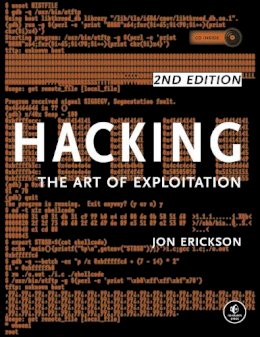20%OFF

Stock image for illustration purposes only - book cover, edition or condition may vary.
Hacking: The Art of Exploitation, 2nd Edition
Jon Erickson
€ 48.99
€ 39.32
FREE Delivery in Ireland
Description for Hacking: The Art of Exploitation, 2nd Edition
Paperback. Deals with computers/software. Num Pages: 472 pages, black & white illustrations. BIC Classification: URH. Category: (G) General (US: Trade). Dimension: 238 x 179 x 34. Weight in Grams: 970. The Art of Exploitation. 472 pages, illustrations. Deals with computers/software. Cateogry: (G) General (US: Trade). BIC Classification: URH. Dimension: 238 x 179 x 34. Weight: 952.
Hacking is the art of creative problem solving, whether that means finding an unconventional solution to a difficult problem or exploiting holes in sloppy programming. Many people call themselves hackers, but few have the strong technical foundation needed to really push the envelope. Rather than merely showing how to run existing exploits, author Jon Erickson explains how arcane hacking techniques...
Read moreProduct Details
Publisher
No Starch Press
Number of pages
472
Format
Paperback
Publication date
2008
Condition
New
Weight
955g
Number of Pages
488
Place of Publication
San Francisco, United States
ISBN
9781593271442
SKU
V9781593271442
Shipping Time
Usually ships in 8 to 11 working days
Ref
99-1
About Jon Erickson
Jon Erickson has a formal education in computer science and speaks frequently at computer security conferences around the world. He works as a cryptologist and security specialist in Northern California.
Reviews for Hacking: The Art of Exploitation, 2nd Edition
"A book this good is a rare find, and certainly worth the read for any individual interested in security. Rating: 9/10" —Slashdot "We can surely say that this book is one of the essential hacking books of all time." —Hackerzzz "This book does a great job of covering C programming, assembly programming, vulnerability discovery, and exploitation all in one. If...
Read more